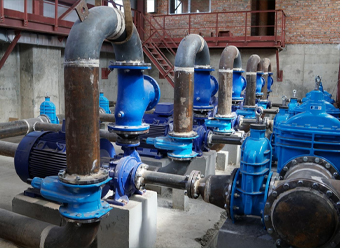Khmer
- Afrikaans
- Albanian
- Amharic
- Arabic
- Armenian
- Azerbaijani
- Basque
- Belarusian
- Bengali
- Bosnian
- Bulgarian
- Catalan
- Cebuano
- Corsican
- Croatian
- Czech
- Danish
- Dutch
- English
- Esperanto
- Estonian
- Finnish
- French
- Frisian
- Galician
- Georgian
- German
- Greek
- Gujarati
- Haitian Creole
- hausa
- hawaiian
- Hebrew
- Hindi
- Miao
- Hungarian
- Icelandic
- igbo
- Indonesian
- irish
- Italian
- Japanese
- Javanese
- Kannada
- kazakh
- Khmer
- Rwandese
- Korean
- Kurdish
- Kyrgyz
- Lao
- Latin
- Latvian
- Lithuanian
- Luxembourgish
- Macedonian
- Malgashi
- Malay
- Malayalam
- Maltese
- Maori
- Marathi
- Mongolian
- Myanmar
- Nepali
- Norwegian
- Norwegian
- Occitan
- Pashto
- Persian
- Polish
- Portuguese
- Punjabi
- Romanian
- Russian
- Samoan
- Scottish Gaelic
- Serbian
- Sesotho
- Shona
- Sindhi
- Sinhala
- Slovak
- Slovenian
- Somali
- Spanish
- Sundanese
- Swahili
- Swedish
- Tagalog
- Tajik
- Tamil
- Tatar
- Telugu
- Thai
- Turkish
- Turkmen
- Ukrainian
- Urdu
- Uighur
- Uzbek
- Vietnamese
- Welsh
- Bantu
- Yiddish
- Yoruba
- Zulu
Telephone: +86 13120555503
Email: frank@cypump.com
តុលា . 05, 2024 03:05 Back to list
Efficient Techniques for Pumping Hydrated Lime Slurry in Construction Applications
Pumping Hydrated Lime Slurry Techniques and Considerations
Hydrated lime, also known as calcium hydroxide, is widely used in various industrial applications, particularly in water treatment, soil stabilization, and as a pH adjuster in different chemical processes. When applied in the form of a slurry, hydrated lime provides enhanced efficacy in carrying out its intended functions. However, pumping hydrated lime slurry poses specific challenges that necessitate careful consideration of the methods and equipment used.
Understanding Hydrated Lime Slurry
Hydrated lime is created by the reaction of calcium oxide with water, resulting in a fine white powder that can be mixed with water to create a slurry. This slurry holds significant advantages it has improved mobility, ease of application, and better absorption by soil and other materials. Hydrated lime slurry is particularly crucial in water treatment plants where it helps in clarifying water by precipitating impurities.
Pumping Challenges
When it comes to pumping hydrated lime slurry, several challenges can arise. The physical properties of the slurry—such as viscosity, density, and particle size—can influence the choice of pumping equipment. Hydrated lime slurry typically exhibits non-Newtonian behavior, meaning its viscosity can change under different shear rates. This characteristic can lead to issues such as clogging in pipelines and valves, resulting in costly downtime and maintenance.
Selecting the Right Pump
Choosing the appropriate pump for hydrated lime slurry is critical. Centrifugal pumps are often used due to their ability to handle a range of flow rates and pressures. However, for highly viscous slurries, positive displacement pumps may be more effective, as they provide a consistent flow regardless of the viscosity. It's essential to consider factors such as the pump's material construction, which should resist corrosion and abrasion from the lime particles.
hydrated lime slurry pumping

In addition to the pump type, other components of the pumping system, such as hoses, fittings, and valves, must also be compatible with hydrated lime slurry. Ensuring that these components are designed to withstand the chemical nature of lime and its potential abrasiveness is key to maintaining an efficient pumping operation.
Operational Considerations
Proper operation and maintenance practices are crucial for efficient hydrated lime slurry pumping. Regular monitoring of the pump's performance and the condition of the hoses and fittings can prevent unexpected breakdowns. Additionally, it is advisable to maintain appropriate slurry concentration to reduce viscosity, making it easier to pump and minimizing wear on the equipment.
Environmental and Safety Concerns
When handling hydrated lime and its slurry, environmental and safety considerations must not be overlooked. The high pH of hydrated lime can pose risks to human health and the environment if not managed correctly. Appropriate protective equipment should be worn by operators, and systems should be in place to manage spills and waste effectively.
Conclusion
Pumping hydrated lime slurry presents unique challenges that require thoughtful consideration of equipment selection, operational practices, and safety measures. By understanding the properties of hydrated lime and being diligent in maintenance, industries can effectively harness the benefits of this versatile material while ensuring a safe and efficient pumping process. As demand for environmentally friendly solutions continues to rise, the role of hydrated lime in sustainable industrial practices will undoubtedly grow.
-
Horizontal Split Case Pump with GPT-4 Turbo | High Efficiency
NewsAug.01,2025
-
ISG Series Pipeline Pump - Chi Yuan Pumps | High Efficiency, Durable Design
NewsAug.01,2025
-
Advanced Flue Gas Desulfurization Pump with GPT-4 Turbo | Durable & Efficient
NewsJul.31,2025
-
ISG Series Vertical Pipeline Pump - Chi Yuan Pumps | Advanced Hydraulic Design&Durable Construction
NewsJul.31,2025
-
ISG Series Vertical Pipeline Pump - Chi Yuan Pumps | Energy Efficient & Low Noise
NewsJul.31,2025
-
pipeline pump - Chi Yuan Pumps Co., LTD.|High Efficiency&Low Noise
NewsJul.31,2025










